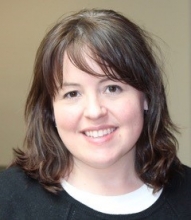
Associate Professor of Bioengineering
UCLA
Abstract: Engineering cell culture environments that mimic the dynamic topography and 3-D nature of tissues is a major challenge in tissue engineering. Even with advanced manufacturing techniques such as 3-D printing, it is difficult to produce 3-D structures of soft hydrogels, which are otherwise ideal for cell culture. We have designed photodegradable hydrogels incorporating ortho-nitrobenzyl moieties that permit encapsulation or cell seeding on swollen planar films; the properties of these films can be subsequently changed through exposure to cell-compatible light. We used maskless photolithography as a flexible process for direct, non-contact gradient patterning of photodegradable hydrogels with custom graphics. Any input gray scale image can be used to directly chart hydrogel crosslink density as a function of spatial position. Hydrogels can be patterned with submicron resolution, with length-scales within a single substrate spanning several orders of magnitude. A quantitative relationship between input grayscale image pixel intensity and output gel stiffness was validated, allowing for direct gradient patterning. Our approach results in a robust and high-throughput platform to answer key questions about cell response in heterogeneous physical environments. We also utilized photodegradable hydrogels as dynamically tunable, shape-changing scaffolds for culturing cells. PEG diacrylate-based thin films incorporating ortho-nitrobenzyl (o-NB) moieties were transformed from flat 2-D sheets to folded 3-D structures by exposure to 365 nm UV light. As the UV light is attenuated through the thickness of the gel, a crosslink density gradient is formed. This gradient gives rise to differential swelling and a bending moment, resulting in gel folding into tubes, containers or spirals. This bottom-up approach enables the use of simple 2-D precursors to create biologically relevant 3-D structures such as tubes and folded containers for cell encapsulation. Unlike other shape-changing polymer systems, the o-NB hydrogel system requires no laminated bilayers, pH change or elevated temperatures to induce shape change. Furthermore, photodegradation based shape change enables external temporal control of folding that can be induced at time points of choice during cell culture.
Bio: Andrea M. Kasko graduated from the University of Michigan with a bachelor's degree in chemistry. In 1999, she obtained an M.S.E. in macromolecular science engineering from Case Western Reserve University under the direction of Professor Virgil Percec, and in 2004 she obtained a doctorate in polymer science at the University of Akron working with Professor Coleen Pugh. After two years of postdoctoral research sponsored by the Howard Hughes Medical Institute and under the direction of Professor Kristi Anseth at the University of Colorado, Boulder, Kasko joined the bioengineering department at UCLA, where she is currently an associate professor. The Kasko Lab focus is the synthesis of new polymeric biomaterials, specifically in two areas: dynamically controllable biomaterials and biomimetic and bio-derived materials.
Share
Upcoming Events
-
MSE 298 Seminar: Mechano-Electrochemical Phenomena at Ceramic Electrolyte Interfaces
-
CBE 298 Seminar: Beyond the Tailpipe - From the Science of Soot Formation to the Engineering of Carbon Nanomaterials
-
MSE 298 Seminar: Innovation In Materials Science - An Industrial R&D Perspective
-
MSE 298 Seminar: Understanding the Impact of Grain Boundary Inclination on Grain Growth Using Modeling and Simulation and Experiments
-
EECS Seminar: Mixed Conductors for Bioelectronics
